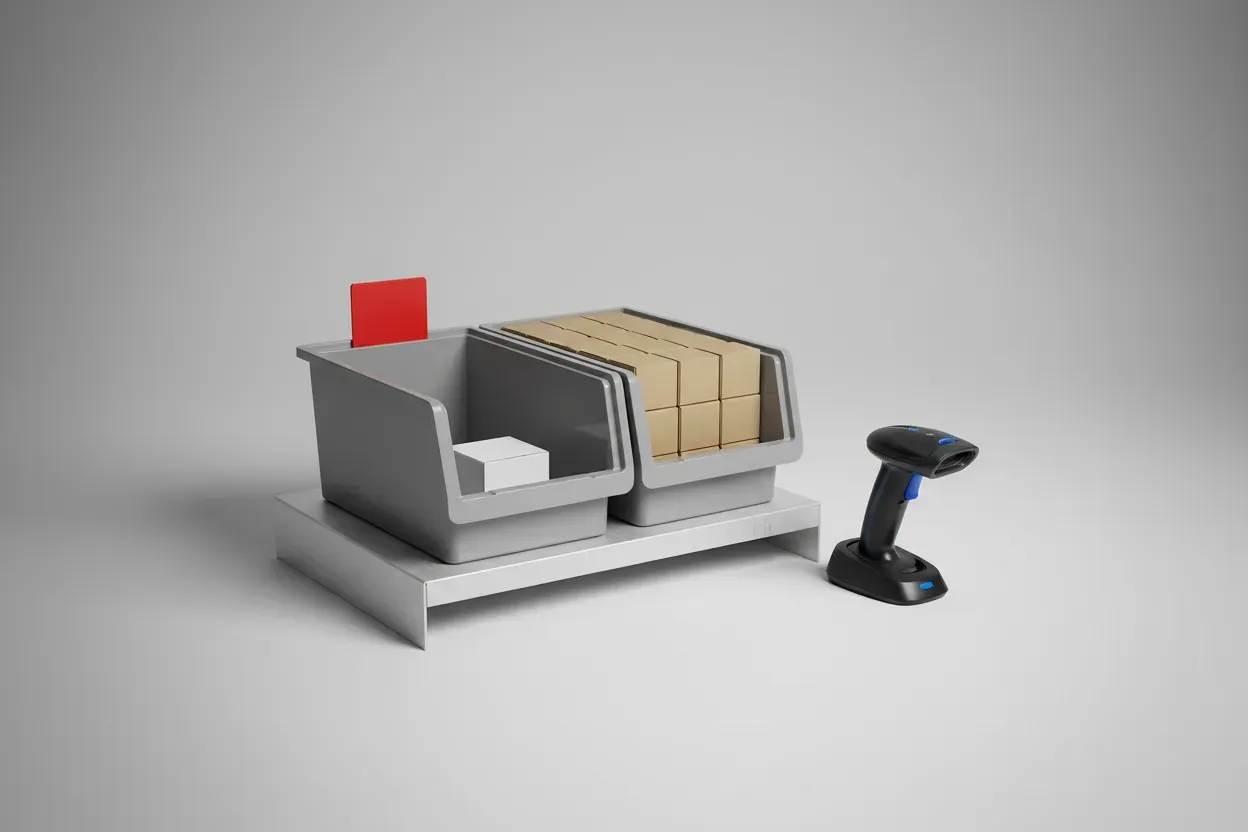What’s Your Strategy for Managing Cash Flow and Financial Stability?
Cash flow management is often the lifeblood of any thriving business, and it’s an art that even seasoned experts continually strive to master. In today’s post, insights from a CEO and a Founder & CEO shed light on strategies to ensure financial stability. The article kicks off with advice on maintaining a cash reserve and wraps up with the importance of using a rolling 13-week cash-flow forecast, featuring a total of nine expert insights. Read on to discover invaluable tips from industry leaders.
- Maintain a Cash Reserve
- Set Clear Payment Terms
- Review and Reduce Overhead Costs
- Focus on Recurring Revenue Streams
- Use Detailed Cash-Flow Forecasting
- Create a Rolling Cash Flow Forecast
- Implement Monthly Retainer Agreements
- Balance Accounts Receivable and Payable
- Use a Rolling 13-Week Cash-Flow Forecast
Maintain a Cash Reserve
Managing cash flow is crucial for any business, especially in the startup world where I’ve seen countless companies struggle. We’ve developed a robust system to keep our finances in check. One strategy we swear by is maintaining a cash reserve of at least three months’ operating expenses. This buffer has saved us more than once when clients were slow to pay or unexpected costs cropped up.
I remember a time when we had a major project delayed by two months due to a client’s internal issues. Having that reserve meant we could keep paying our team and our bills without breaking a sweat. It’s not just about having the money, though—it’s about smart allocation. We regularly review our expenses and prioritize spending on areas that directly contribute to growth and client satisfaction.
We also use cash-flow forecasting tools to predict potential shortfalls and plan accordingly. This proactive approach has helped us avoid the cash crunches that sink so many startups. Another tip I often share with our startup clients is to negotiate favorable payment terms with suppliers while offering incentives for early payment to customers. It’s a delicate balance, but when done right, it can significantly improve your cash position.
 Niclas Schlopsna
Niclas Schlopsna
Managing Consultant and CEO, spectup
Set Clear Payment Terms
Keeping a cash reserve and setting clear payment terms with clients, for example, is an effective strategy that helps me maintain cash flow and ensure the financial stability of my business. It provides a buffer in case some of the sundry expenses are incurred and smoothens the day-to-day running of operations.
Regularly setting aside a portion of our revenue in a dedicated reserve ensures there is always some financial cushion for the business. In turn, this will primarily help protect the business from short-term cash flow fluctuations, unpredictable seasonal changes, or unseen costs, allowing its operations to continue without resorting to debt or drastic cost-cutting measures.
We agree on payment due dates and how invoicing is expected when we first begin a job with a client. We use automated invoicing reminders to clients as reminders to pay before due dates and follow up if there are any missed deadlines. These will ensure that payments are made on time and hence less likely to disrupt the cash flow.
Adding both of the above strategies—that is, building up cash reserves and managing clients’ payments—will likely keep cash flow healthy and stable even in the toughest times. So, we are preparing for growth while getting prepared to adjust to the temporary financial disruption.
 Ben Whitmarsh
Ben Whitmarsh
Owner and Managing Director, Generators for Export
Review and Reduce Overhead Costs
Regularly reviewing and reducing overhead costs has been key to maintaining steady cash flow in my business. I make it a point to conduct a thorough audit of all recurring expenses, including subscriptions, utility services, and software tools. By carefully evaluating these areas, I’ve been able to identify and eliminate non-essential services that were quietly draining resources. This proactive approach has helped me keep financial commitments under control and avoid cash-flow issues during slower periods. I encourage other businesses to adopt this practice. Auditing isn’t just about cutting costs; it’s about being intentional with every dollar spent and ensuring that every expense aligns with your business priorities.
 Brian Staver
Brian Staver
CEO, NetPayAdvance.com
Focus on Recurring Revenue Streams
One key strategy I use for managing cash flow and ensuring financial stability in my business is maintaining a strict focus on recurring revenue streams. Cash flow can fluctuate, especially when relying heavily on one-off projects, so by cultivating long-term client relationships with retainer-based agreements, I’m able to create a consistent and predictable income. This not only helps cover monthly expenses, but also provides a buffer for slower periods, reducing financial stress.
Additionally, I always prioritize invoicing clients as soon as work is completed, rather than waiting for month-end billing cycles. I’ve found that immediate invoicing speeds up payments, improves cash flow, and minimizes any delays in receiving funds. By setting clear payment terms and following up on overdue payments, I ensure that the business remains financially stable, even in more challenging times. This proactive approach has been crucial in maintaining smooth operations over the years.
 Brandon Leibowitz
Brandon Leibowitz
Owner, SEO Optimizers
Use Detailed Cash-Flow Forecasting
One of our key strategies is maintaining a detailed cash-flow forecast. By regularly projecting our inflows and outflows, we can anticipate shortfalls and take proactive steps to address them before they become issues.
One specific strategy we employ is negotiating favorable payment terms with suppliers while offering early payment incentives to clients. For example, we work with our suppliers to extend payment windows when possible, giving us more time to manage cash.
By closely monitoring our cash flow and using this approach, we can maintain financial stability even during high production- or market-volatility periods. This allows us to focus on growth without compromising the business’s financial health.
 Steven Mitts
Steven Mitts
Founder & CEO, IVeinte Spirits
Create a Rolling Cash Flow Forecast
One key strategy we use for managing cash flow is creating a rolling cash flow forecast. This means our team consistently updates a 3-, 6-, and 12-month projection of all expected cash inflows and outflows. By doing this, we can spot potential cash shortages or surpluses ahead of time and adjust accordingly. It helps us stay proactive, whether that’s cutting unnecessary expenses, speeding up invoicing, or delaying certain purchases to keep the business on solid financial ground. It’s all about staying ahead of the curve, rather than reacting to cash flow issues after they arise.
 Igor Tutelman
Igor Tutelman
Managing Partner, Iota Finance
Implement Monthly Retainer Agreements
In my local SEO agency, where we focus on optimizing Google Business Profiles to help clients rank higher on Google Maps, managing cash flow is essential. One strategy that has worked well for us is implementing monthly retainer agreements. Instead of working on a one-time project basis, we structure our services as ongoing partnerships. We offer clients different packages that include continuous support, monthly updates, and optimization efforts tailored to their business needs.
By setting up these agreements, we secure predictable, recurring revenue, which helps us manage expenses like payroll, software subscriptions, and marketing costs. This model not only stabilizes our cash flow but also ensures our clients receive consistent service, leading to long-term relationships and better results.
To make this work, we provide transparent service outlines and show clients how these regular efforts directly impact their rankings and visibility. This builds trust and justifies the value of our monthly fees, allowing us to keep our cash flow steady while providing clients with the continuous support they need.
 Ramzy Humsi
Ramzy Humsi
Founder & CEO, Vortex Ranker
Balance Accounts Receivable and Payable
One key strategy I use for managing cash flow is maintaining a strong balance between accounts receivable and payable. We prioritize quick invoicing and encourage early payments from clients by offering small discounts. This helps ensure consistent cash flow to cover operational expenses like payroll, equipment maintenance, and supplies. On the flip side, we negotiate extended payment terms with our suppliers whenever possible to give us more flexibility. This balance helps us keep finances stable, especially during slower months.
 Amaury Ponce
Amaury Ponce
Business Owner, Ponce Tree Services
Use a Rolling 13-Week Cash-Flow Forecast
We use a “rolling 13-week cash-flow forecast” to help property managers stay ahead of financial needs. By projecting cash inflows and outflows weekly and adjusting based on actuals, clients get a clear view of their cash runway. For instance, we helped one client managing an apartment complex handle unexpected maintenance costs by building a reserve fund. This strategy ensures better planning for rent collection, vendor payments, and capital improvements, avoiding cash crunches and improving decision-making.
 Narine Masropian
Narine Masropian
Founder, Property Accounting Co
Submit Your Answer
Would you like to submit an alternate answer to the question, “What’s your strategy for managing cash flow and ensuring financial stability in your business? Share one cash flow management strategy.”






































